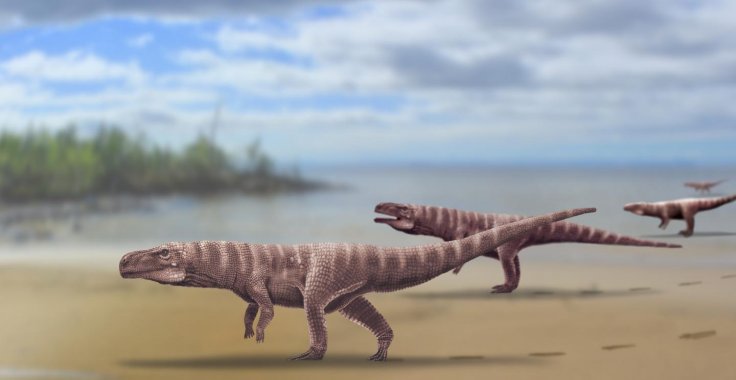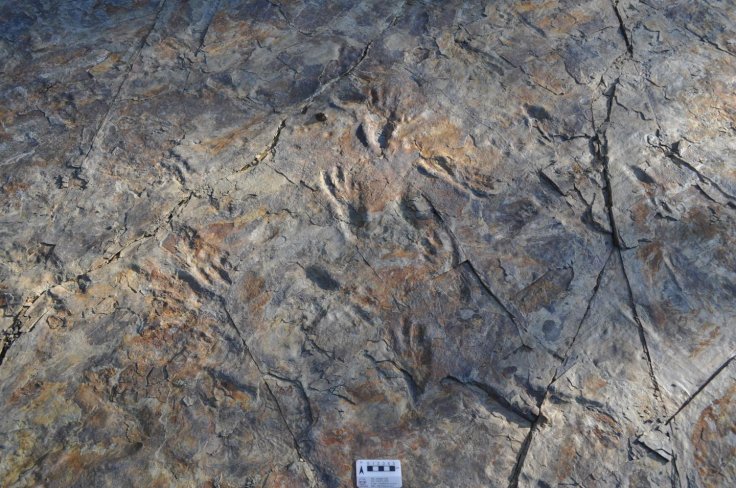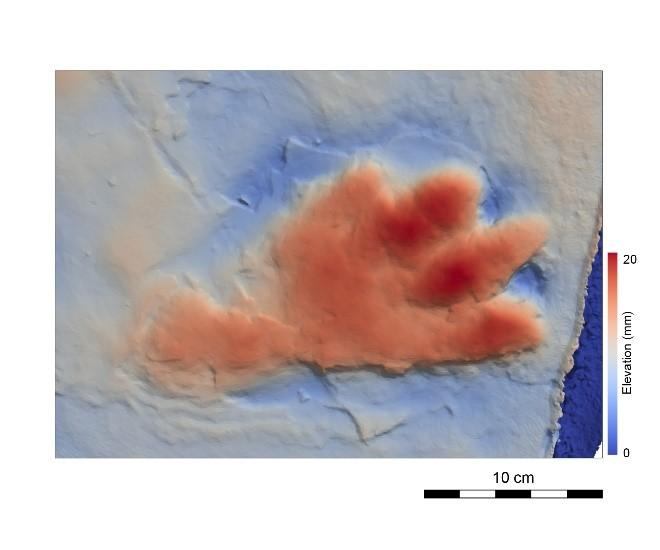When one imagines a crocodile, it is the image of a water-dwelling reptilian that walks on four legs. However, an international team of researchers has discovered that certain species of ancient crocodiles walked on their hind legs like dinosaurs and grew up to a length of three meters.
At the Lower Cretaceous Jinju Formation of South Korea, the paleontologists discovered well-preserved footprints from 110-120 million years ago that belonged to a massive bipedal ancestor of modern-day crocodiles. "It shocked us to learn that the trackways represent bipedal animals 3-4 meters long," said Prof. Kyung Soo Kim, lead author of the study, in a statement.
An Unusual Discovery

Paleontologists have been aware that certain species of crocodiles belonging to the "age of dinosaurs" had a larger adaptation to life on land when compared to their present-day relatives. However, they were known to be smaller in size—approximately one meter in length—with recorded footprints proving that they used all their four legs for movement.
The scientists named the 18-24 cm-long tracks Batrachopus grandis, as they were significantly larger in comparison to the smaller Batrachopus variety that was commonly found in Jurassic North America. Based on the measurement of these tracks, the authors deduced that they were made by an animal whose feet's length was similar to that of a human being.
Mistaken for A Pterosaur
While the scientists knew that they were dealing with an ancient reptilian species, they mistook it for that of a two-legged pterosaur. "At one site, the footprints were initially thought to be made by a giant bipedal pterosaur walking on the mudflat, we now understand that these were bipedal crocodile prints," said Dr. Anthony Romilio, co-author of the study.

The tracks also showed the pattern of the pads, depicting the structure of the foot bone and the narrowness of the trackways, which suggested a bipedal gait. This was a significant departure from the wide-spreading posture of modern-day crocodiles.
"Typical crocodiles walk in a squat stance and create trackways that are wide. Oddly, our trackways are very narrow looking - more like a crocodile balancing on a tight-rope. When combined with the lack of any tail-drag marks, it became clear that these creatures were moving bipedally," Prof. Kim said.

A Contradiction To Modern-Day Crocodiles
Based on the evidence that the parallel trackways provide, the paleontologists posit that these creatures could have traveled in social groups, similar to the dinosaurs alongside which they existed.
"They were moving in the same way as many dinosaurs, but the footprints were not made by dinosaurs. Dinosaurs and their bird descendants walk on their toes. Crocodiles walk on the flat of their feet leaving clear heel impressions, like humans do," added Prof. Kim.

Initially, the scientists were skeptical about the absence of hand impressions from the trackways. This was because crocodiles of today are quadrupedal or 'four-legged'. According to Dr. Romilio, it is rare to find fossilized crocodile tracks in Asia. Also, poorly preserved tracks of a bipedal animal in 2012 in a South Korean rock unit created the 'mystery' of a unique creature. This made the new discovery all-the-more special.
"As an animal walks, the hind feet have the potential of stepping into the impression made by the hand and 'over-printing' it, but we find no evidence of this at these Korean sites. It isn't due to poor preservation either, because these fossils are spectacular, they even have the fine details of the toe-pads and scales on their soles preserved," said Dr. Romilio









